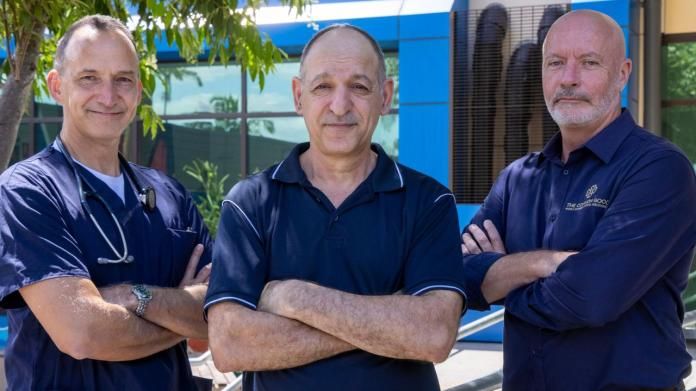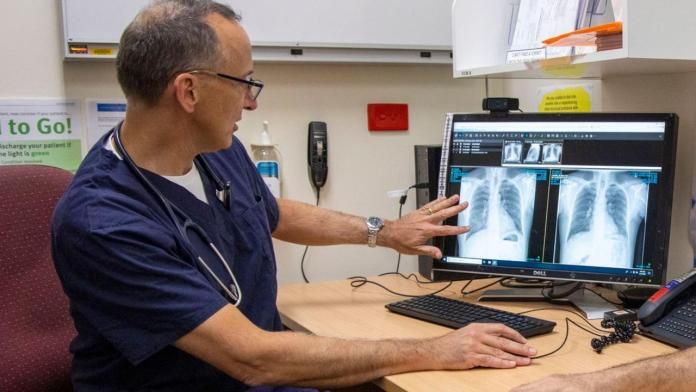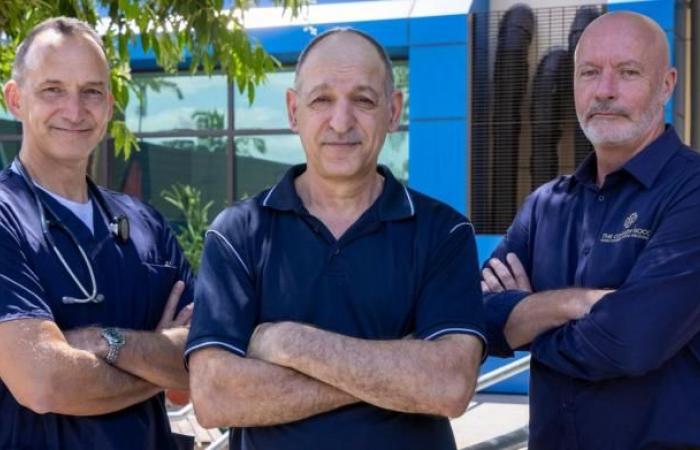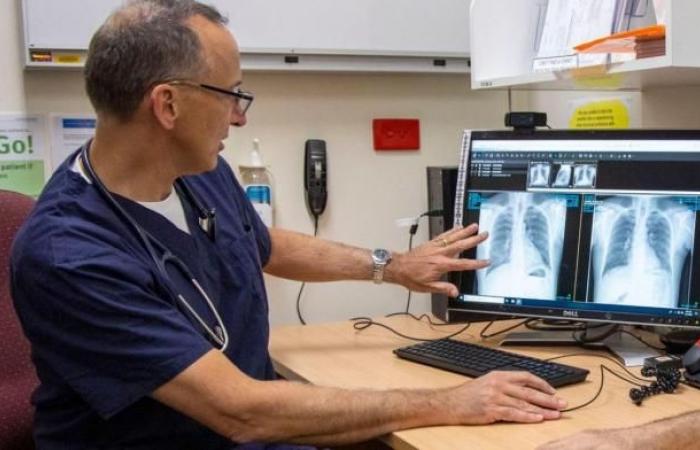The bulletin states that since March, six people with silicosis have been studied as part of a silicosis research program at the Prince Charles Hospital (TPCH) in Brisbane.
Four trades of mild silicosis were practically cured of the disease after a full lung lavage or “lung wash”; A process in which 25 liters of water are flushed through each lung over a period of three to four hours.
The other two men with advanced silicosis hope again that their condition will remain stable and possibly have a longer lifespan.
COAST SILICOSIS VICTIM CALLS FOR BAN ON ENGINEERED STONE
Cutting-edge research that led to medical breakthroughs was funded entirely by a $ 500,000 grant from The Common Good Movement, an initiative of the TPCH Foundation dedicated to funding researchers for important medical discoveries.
In order for the vital work to continue, The Common Good is desperate to raise $ 5 million from the corporate sector, construction, and any other industry interested in saving the lives of artisans.
At the head of the hospital’s silicosis research program are Professor Dan Chambers and Dr. Simon Apte, Research Associate at the TPCH Foundation and Lecturer at the University of Queensland (UQ).
Prof. Chambers is Prince Charles’ Thoracic Transplant Physician and Director of Research with the Queensland Lung Transplant Service. Crucially, he was heavily involved in the Queensland government’s silicosis screening program when it began in 2017.
“Of the Queensland workers studied, 85 percent have a mild form of the disease, and we felt we could completely remove the dust from their lungs and possibly cure their silicosis,” said Prof. Chambers of the trials.
“In four of the patients who had early silicosis, we saw a 16-fold reduction in dust in the lungs after irrigation and dramatic changes in the CAT scans. They have as good as normalized. ”
In Queensland alone, nearly 200 young stonemasons suffer from silicosis and many are already seriously ill.
The medical breakthrough comes from the bulletin’s research, which uncovered:
* More young stonemasons are diagnosed with silicosis every month.
* The authorities knew what was killing the men but did not prohibit engineering stones because they were “cheap and mass-produced”.
* Workers were afraid of losing their jobs by speaking up as it was largely up to employers to ensure that employees are screened.
* Workplace Health and Safety Queensland rechecked only 166 stone workstations eight months after it was announced, following requests from the bulletin.
Silicosis is a long-term lung disease caused by inhaling large amounts of crystalline quartz dust, usually for many years. While it occurs naturally on many surfaces, artificial stone contains up to 95 percent quartz dust.

Prof. Chambers said, “When in 2018 I started meeting dozen of young men diagnosed with silicosis, particularly on the Gold Coast, I saw how widespread the problem was and would become.”
Fortunately, Dr. Apte about to develop the world’s first test to measure the amount of silica in a patient’s lungs, which can be used to measure the success of a treatment known as complete lung lavage.
Traditionally used to treat a rare lung disease called pulmonary alveolar proteinosis, Prof. Chambers realized that he could use this technique again to remove fumed silica particles from the lungs before they can cause irreparable damage.
“The work in the laboratory was critical. The Eureka moment was likely when we saw the crystal in these cells, which are in the air spaces but have not yet established themselves in the lung tissue. Then we knew it would work, ”he said.
Prof. Chambers said Dr. Apte and his team collected cells from patients to determine a treatment for patients with progressive massive fibrosis (PMF), a condition caused by long-term exposure to quartz dust.

“We recognize that while we may have a cure for people with early silicosis, we still need to take care of those who have a more advanced disease that is already scarring.
“It is very likely that this will involve reusing an existing drug once we understand how lung scars occur.
“Australia is an advanced economy, we have great science and it’s just a matter of applying that to this problem.”
Dr. Apte said he and his team would use two $ 200,000 worth of high-tech devices donated by UQ to conduct an advanced scientific study of cells removed from silicosis patients.
“Believe it or not, our humble building, with its 1970s wallpaper, is home to one of the most advanced lung research laboratories in the world,” he said.
“One of the unique advantages of our facility is that our laboratory is attached to the hospital.
“As far as we know, no one else is doing this. Our colleagues in Melbourne and Sydney are not far from replicating our work and we will be sharing cells and data. ”
Prof. Chambers said the waiting list for the procedure is growing, but the hospital only has one lung lavage capacity per week, meaning a maximum of 26 silicosis patients could be treated per year.
“We had a lot of support from Queensland Health, but none of this would have been possible with funding from The Common Good,” he said.
“The main message is that this disease is preventable with proper safety measures in the workplace. If this product is not used silicosis will not occur, but for those unfortunate enough to have already developed it, there is a possible solution. ”
[email protected]
Originally published as EXCLUSIVE: World’s First Treatment for Fatal Silicosis
These were the details of the news World’s first treatment for fatal silicosis revealed for this day. We hope that we have succeeded by giving you the full details and information. To follow all our news, you can subscribe to the alerts system or to one of our different systems to provide you with all that is new.
It is also worth noting that the original news has been published and is available at de24.news and the editorial team at AlKhaleej Today has confirmed it and it has been modified, and it may have been completely transferred or quoted from it and you can read and follow this news from its main source.



